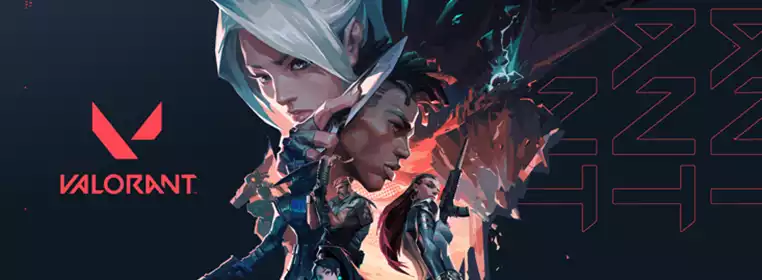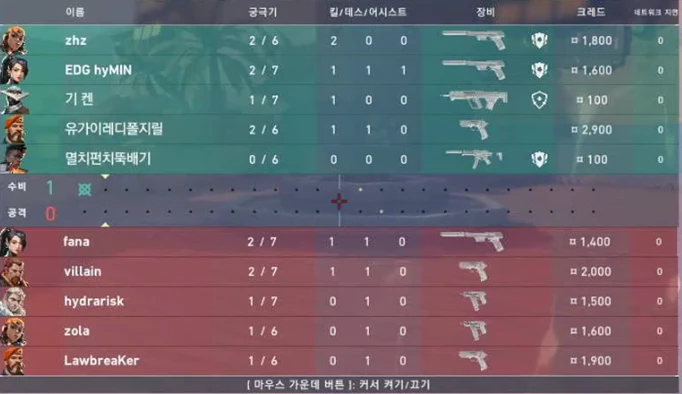Korea Plays VALORANT A Little Differently

The air is thick with haze, the ground trembles, bright lights flash and you’re freezing but at least you’re not alone. You’re in a Korean pistol round.
With the release of VALORANT in South Korea, some of us are looking to the cradle of esports and whether or not the game will develop and what teachings the scene may bring. In 2016, they said Koreans weren’t interested in FPS titles and yet well over half of the Overwatch League, from staff to players, are Korean. If esports history is anything to go by, the general rule is that if Korea culturally locks into a game, it’s only a matter of time until they start developing top-tier teams
We don’t yet know how interested the esports mecca will be and we only have PC Bang play rates to go by. Their numbers are currently low for various reasons but those signals shouldn’t be overvalued at this point.
Rest assured, VALORANT is being played in Korea, with the first tournaments like the Twitch Rivals Launch Showdown Korea and the WESL x Toonation tournament taking place, featuring esports royalty like Overwatch’s Jehong "ryujehong" Ryu and Joon-hyuk "zunba" Kim, as well as several local top tier competitors from other esports such as Fortnite, CSGO and PUBG.
The level of play is arguably not quite up to the level of North America or Europe yet but it’s reasonably close, with a rich metagame that feels noticeably different. From pacing to the economy to agent picks, Korea looks unique and we have to wonder if some parts of the game are more advanced in this region.
Time as a resource - Round pace
The build-up of a round in Korea feels very different. While a lot of the strategies especially in North America feel immediately goal-oriented and revolve around a lot of aim duels, the early rounds in Korea are about forcing the opponent’s utility. A round starts with the offence feeling their opponents out before converging around the 1:15 mark to plan a first execution with a noticeably higher amount of utility being thrown around. Depending on the state of the fight, the offence will often disengage, possibly after a trade. That doesn’t necessarily mean that they are rotating even though it does happen.
At around 0:45 on the clock and with some of the signature abilities coming off cooldown, another hit strikes on a site with both teams throwing out the rest of their utility and it’s much more frequently the case that the offence will simply run out of time and opt to save. Time seems to be a resource in their metagame and you pay for it with utility.
There are no fair fights - Utility usage
Korea’s meta hates to take fair fights in the form of straight-up aim duels without utility impacting it in some way. The best illustration of that mantra is their pistol rounds which see way less Ghost-buys and on average more Classics.
For some of them, this means that they will go Light Armor especially when they are holding tight angles where the Classic isn’t totally outclassed by the Ghost but curiously, almost every single team has their Sage buy her full utility package. As we’ve already found out, time is a limiting resource in this VALORANT meta game and no agent drags it out as well as Sage does. Take the following engagement in the first pistol round between UNFISS and Vision Strikers (formerly MVP PK CS) for an example.
On Bind Defence, UNFISS’ Sage, Autumn sits just outside of U-Hall with his full kit of abilities bought in the pistol round. Gathering information through a one-way smoke from his Brimstone, Autumn jiggle-peeks the corner into A-Short. As a Fault Line reigns down on him and he hears approaching footsteps, he quickly uses Slow Orb to wait out the daze period. VS uses its camera in order to gain an informational advantage and is believed to have located the breaking point of UNFISS’ defence. Smoking off A-Site, they quickly flash U-Hall which catches the Sage in a full blind but she still finds the opportunity to place an effective second Slow Orb.
A second flash in the form of Omen’s Paranoia hits Autumn as his opponents close in. Pressure before he can use his Barrier Orb, he decides to fight and isolate his two opponents, one-shotting each at the optimal range for the Classic with two lethal right clicks. To get to this point, 12 abilities were used with more than half of them directly impacting the fight Autumn would eventually have.
More abilities, more economic pressure
As the Korean meta uses more abilities per round on average, it naturally impacts the economy. One peculiar development has been the second round of a half, in which the pistol-winning team will not count on either a Spectre or Bulldog full buy, but will instead remain on Ghosts with one or two SMG or even Shotguns thrown in, but once again stacked to the brim with utility and armour. Sometimes, they will even have a player completely save to allow for an Operator advantage in round 3.

 Click to enlarge
Click to enlargeThis allows the winning team to enter the third round and the first buy-round for the losing team on nearly even ground. The weakness of running into a second-round force-buy seems apparent but hasn’t shown up during the review yet.
Raze & Sova cut through it
Slightly more so than other regions, Korea seems to put more value on Raze and Sova, with the former gaining the status of a meta staple. On the surface, the explanation seems to be that in a meta state in which so much utility is flying around and so much sight is consistently blocked or space is being shut off, it is of higher importance to be able to clear out corners with preemptive explosives such as Shock Bolt and Paint Shells on top of the already established Brimstone with his Incendiary.
Reyna is played on a team-by-team basis with some teams liking what she brings, though due to her lack of a smoke or explosive ability, she’s likely to fall out of meta in Korea eventually.
